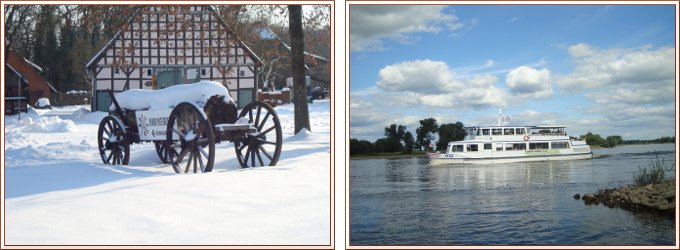The Hanoverian Wendland...
The German Wendland is an area within the state of Lower Saxony of Germany. Its heart is the Hanoverian Wendland within the county of Luechow-Dannenberg, surrounded by the German states of Brandenburg, Mecklenburg Western Pomerania, and Saxony Anhalt.
The name of Wendland has its origin in the word ‘Wenden’. In the 18th century inhabitants of West Slavic origin that resided in the area, which today is called Wendland, have been called Wenden. This clan, which originated in the area of today’s Ukraine, started settling here as early as the 7th century. Even today you will come across relicts of this time gone by, especially while ready the names of many small villages, such as Luechow, Drawehn, Wustrow and Luebeln.
Not only have the names remained. In addition you will be able to discover the very unique form of settlement that is typically for this area. Circular villages (Rundlingsdorf) are a typical Slavic form of settlement of this time. Even today visitors are invited to enjoy these historically valuable villages by exploring villages such as Breese im Bruche, Bussau, Guehlitz, Jabel, Jameln, Luebeln, Meuchefitz, Reetze, Satemin and Schreyahn. The historic importance of these gems has been underlined by the fact that these circular villages of the Hanoverian Wendland have been nominated to become UNESCO World Heritage Sites in 2012.
The majority of the Hanoverian Wendland is located within the Elbe’s ancient river valley. However, the western part of the Wendland merges into the Lueneburger Heath, while in the north it borders to the biosphere region of Elbtalaue. There is a variety of rivers and streams meandering through the area, one of which is called Jeetzel.
 From left to right: Winter in the village of Luebeln, The Elbe near Damnatz
From left to right: Winter in the village of Luebeln, The Elbe near Damnatz

